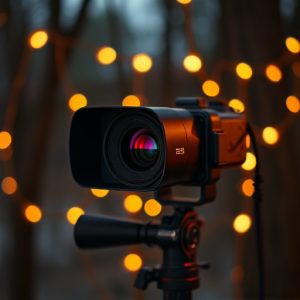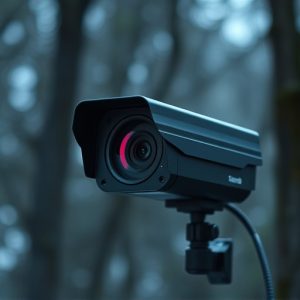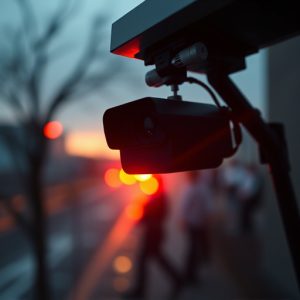Wireless Night Vision Cameras: Reflecting Light for Enhanced Spy Detection
Detecting hidden spy cameras indoors using light reflection analysis is a critical security measure,…….
Detecting hidden spy cameras indoors using light reflection analysis is a critical security measure, especially with the prevalence of wireless night vision security cameras. This method identifies unique infrared reflection patterns from spy cameras, but indoor complexities like varied lighting and reflective surfaces can challenge accuracy. Advanced AI/machine learning algorithms adapt to real-time changes, distinguishing natural light from artificial signals, making them invaluable in bustling indoor environments. Continuous updates are needed for detection algorithm effectiveness against sophisticated spy cameras designed to minimize reflections.
Uncover the secrets behind a unique surveillance solution—the spy camera detection light reflection technique. This innovative approach leverages natural light to identify hidden cameras, offering an intriguing alternative to traditional security measures. In this article, we explore the science behind light reflection, its effectiveness in detecting wireless night vision security cameras indoors, and advanced techniques that can further enhance accuracy. Get ready to navigate the world of indoor camera security like never before.
- Understanding Light Reflection in Spy Camera Detection
- The Pros and Cons of Using This Technique for Wireless Night Vision Security Cameras Indoors
- Advanced Techniques to Enhance Spy Camera Detection Accuracy
Understanding Light Reflection in Spy Camera Detection
Understanding Light Reflection is a crucial aspect of detecting hidden spy cameras, especially in indoor environments where wireless night vision security cameras are commonly used. This technique leverages the principle that light interacts with surfaces differently depending on its angle and intensity. When a spy camera is present, it emits infrared (IR) light to capture images in low-light conditions, creating a unique reflection pattern. By analyzing these reflections, experts can identify the camera’s location.
In indoor spaces, the reflection technique becomes particularly valuable due to the variety of surfaces—walls, floors, and furniture—that can alter or obscure the reflected IR light. Skilled technicians use specialized equipment to detect even subtle variations in light reflection, enabling them to pinpoint hidden cameras. This method is essential for maintaining privacy and security in homes, offices, and other spaces equipped with wireless night vision security cameras.
The Pros and Cons of Using This Technique for Wireless Night Vision Security Cameras Indoors
Pros:
The light reflection technique for spy camera detection offers a non-invasive and cost-effective solution for enhancing indoor security. By utilizing existing lighting sources and advanced algorithms, this method allows for the passive identification of hidden cameras without triggering any mechanical or electronic signatures. This is particularly advantageous in residential or commercial settings where wireless night vision security cameras are employed, ensuring privacy and discretion while maintaining effective surveillance. Moreover, it provides a real-time capability to scan and monitor areas continuously, making it an ideal tool for proactive security measures.
Cons:
However, light reflection detection is not without limitations. Indoor environments with complex lighting setups or significant natural light variations can challenge the accuracy of this technique. Mirrors, windows, and other reflective surfaces might create false positives or mask genuine camera signals, leading to potential errors in detection. Additionally, sophisticated spy cameras designed to minimize reflection may evade identification through this method, requiring constant updates and improvements to the detection algorithms to stay ahead of evolving technology.
Advanced Techniques to Enhance Spy Camera Detection Accuracy
In the quest for enhanced spy camera detection, especially in indoor settings, advanced techniques have emerged to boost the accuracy and reliability of security systems. One such innovative method leverages wireless night vision security cameras that employ sophisticated image processing algorithms to analyze video feeds in real-time. These cameras can detect subtle variations in light reflection patterns, enabling them to identify suspicious objects or devices that might be hidden cameras.
By integrating artificial intelligence (AI) and machine learning capabilities, these wireless night vision security cameras can learn from vast datasets of known camera signatures and unusual reflections. This allows them to adapt to new environments, distinguish between natural light variations and artificial signals, and accurately pinpoint potential spy cameras. Such sophisticated techniques are particularly useful in bustling indoor spaces, where the constant flux of light and movement might otherwise obscure the presence of hidden surveillance equipment.
The spy camera detection light reflection technique offers a promising approach to enhancing indoor security with Wireless Night Vision Security Cameras. By leveraging natural and artificial light sources, this method can effectively reveal hidden cameras, providing homeowners and businesses with an additional layer of privacy protection. However, it’s essential to consider the limitations, such as potential false positives and the need for continuous refinement. Advanced techniques, combining reflection analysis with machine learning, hold the key to future improvements in accuracy, making indoor surveillance systems more robust against unauthorized observation.


